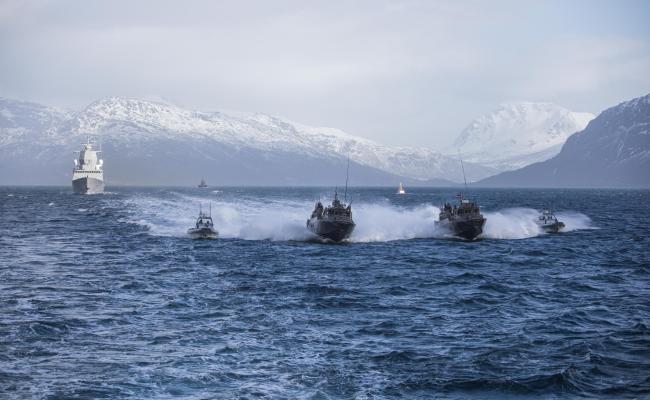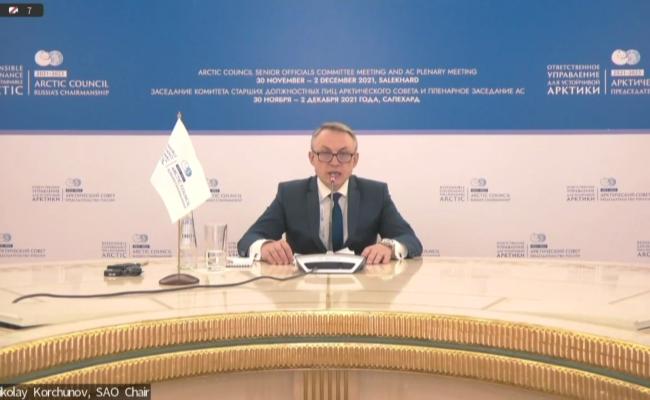Ukraine War Warns Against Poor Digital Security in the North
Lieutenant-Colonel in the Norwegian Army and Researcher at the Norwegian Defense University College Tormod Heier warns against an unstable defense. “Avoid fluctuations. Look to Finland. They are thinking long-term and build their defense bit by bit, while Norway and Sweden re-locate forces, build up and down, and change their focus”, Heier says. (Photo: Trine Jonassen)
“A critical situation in the Baltic Sea may force Russia to extend its northern defense zone to also apply to Svalbard and parts of Finnmark”, says Lieutenant-Colonel and Researcher Tormod Heier.
While Russia’s war in Ukraine rages on, one of the world’s most advanced collections of nuclear arms and Russia’s most precious tool for maintaining the terror balance against the West is located just a few miles from the Norwegian border to Russia.
We are talking about nuclear submarines off the Kola Peninsula in Arctic Russia, where the subs are located in order to be able to reach the US’ coastline as fast as possible.
“Due to the earth’s curvature, the shortest way to the US’ east coast goes past Svalbard”, says Lieutenant-Colonel of the Norwegian Army and Researcher at the Norwegian Defense University College Tormod Heier to High North News.
Russia’s only threat
The weapons are stable in their various locations for now, however, a potential crisis for instance in the Baltic Sea may trigger a Russian need for expanding the defense zone around its nuclear forces in order to secure them.
This means that Russia can ask Norway to curb military activity as far as Svalbard, Bjørnøya [Bear Island] and parts of Finnmark [on the Norwegian mainland] while the conflict is going on, not that Russia can or will invade Norway.
Under given circumstances, such an accident may be misinterpreted and contribute to an escalation that leads to Russian authorities’ choosing to raise nuclear preparedness levels in the North.
“These nuclear arms are what Putin relies the most on as they can be hidden at the bottom of the sea. They are thus Russia’s most credible threat about retaliation if the USA, on their hand, were to threaten to use their nuclear arms”, Heier says.
He explains that otherwise, Russia is militarily and economically inferior to the West. Therefore, the nuclear weapons are Putin’s most important foreign policy tool.
Conflict in the Baltic Sea
In what situation may Putin end up activating Russia’s Northern Fleet?
“A potential scenario could be for instance a collision between Russian and American vessels in the Baltic Sea. Under given circumstances, one cannot exclude the possibility for such an accident to be misinterpreted and contribute to an escalation, which, in turn, leads to Russian authorities choosing to raise nuclear preparedness in the High North. If so, the air, sea and land based forces that are to protect those submarines and bases will also be placed on higher alert.
In this way, a potential crisis in the Baltic Sea may affect Northern Norway.
Lieutenant-Colonel and Researcher Tormod Heier gave a speech during the Øvelse Nord 2022 [Northern Exercise) at Nord University in which he accounted for various scenarios to which the Russian invasion of Ukraine may lead.
Ask Norway to cooperate
“However, in order to increase security for the nuclear forces on the Kola Peninsula, Russian authorities may request Norway to stay out of the Barents Sea for a while because the situation in its relationship to the USA is unclear.”
If the Norwegian government were to say no to such pressure, there may be speculations over whether Russia will feel forced to increase pressure. Not through invasion or occupation, but rather through for instance affecting Norway’s digital infrastructure.
“Something like that would be likely to contribute to worry and concern in the local population, which in turn may contribute to increasing pressure on Norwegian decisionmakers. A robust civil society that can resist such disturbances is thus vital, as it is more likely that Russia will use this kind of pressure rather than a military attack. Thus, the Norwegian front line defense will not be the military but rather civil societ”", Heier says.
That is, the Norwegian people.
Create disturbance
The researcher assumes that Russian security services have sufficient knowledge to disturb the digital infrastructure in Norway, such as the mobile and power grids. Such a disruption or even destruction of digital services will affect people’s everyday lives through payment services as well as traffic control systems in airports, railways, and ferry ports. It will also have consequences for the import of food, medicines, and consumer products for a.o. schools and hospitals.
“Such disturbances can quickly lead to worry and concern amongst people.”
Our advantage is that we are a country rich in resources with a highly educated population and a country in which public faith in authorities is high.
Did something like this ever happen before?
“No, not to my knowledge. Fortunately not. However, we do know that Russian security services in later years have intensified their mapping and testing of digital infrastructure in our country. That may be so because digital attacks are considered a suitable tool in a situation of crisis, for instance in situations in which Russia wants to extract admissions from the Norwegian side, yet not in a way that triggers an armed conflict and a potential counter-reaction from NATO’s side.”
Security too poor
Tormod Heier argues that in particular the Norwegian Defense should have higher digital maturity than what existed prior to Russia’s invading Ukraine. He also argues that civil society should intensify this initiative as the Norwegian defense capacity is inextricably linked to the digital infrastructure.
How can we counter this threat?
“Our advantage is that we are a country rich in resources with a highly educated population and a country in which public faith in authorities is high. The threat can be countered through increasing the general public’s alertness level and consciousness, establish good routines on all levels of public and the private sector, as well as having regular exercises about what to do when power and internet are disrupted.
United NATO
However, Heier believes that a unified Nordic NATO membership will strengthen security in the western High North, and that Sweden and Finland will joint the Alliance at the right time.
“Right now and for some time to come, Russia will be very vulnerable after having worn out large parts of its military land and air forces in Ukraine. Thus, the Russian forces will not have very much capacity left to start new wars in other parts of the country at the same time. Besides, NATO appears more unified now than in a very long time. This means that a membership application from Sweden and Finland can be processed much faster than what we have seen before”, Heier says.
And the threats from Russia are not more than what the two countries can handle.
“At present, Russia has a rather limited space in which to act due to the Ukraine war. It is therefore not much Russia can do to prevent Swedish or Finnish NATO membership, other than limited signaling with cyber attacks or monitoring flights with drones or fighter planes.”
How do you think an increased Nordic defense cooperation would work in practise?
“The Nordics will be strengthened from a defense alliance if they are all also NATO members. We will be better capable of managing crisis together. Not least because the four very rich and wealthy countries combined control some 27 million people and almost 250 fighter planes, when Finland receives its new F-35’s from the USA. And overall, we all approach Russia in a rather similar way with firmness, but also with some level of pragmatism in order not to increase tension levels unnecessarily. I believe a potential NATO membership for our two neighbors will be practiced like in Norway, with a series of self-imposed limitations to reassure the Russians while also deterring them defensively”, Heier says in closing.
Also read
This article was originally published in Norwegian and has been translated by HNN's Elisabeth Bergquist.



